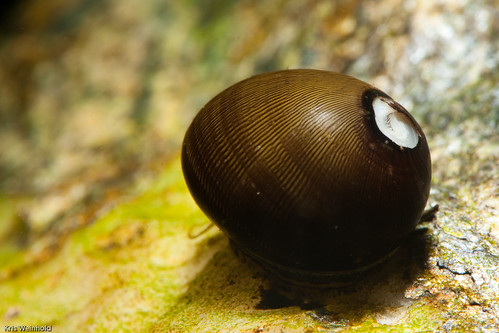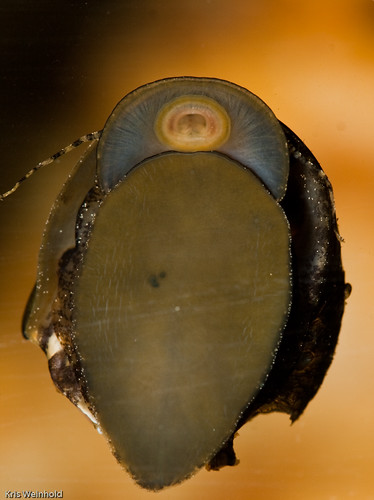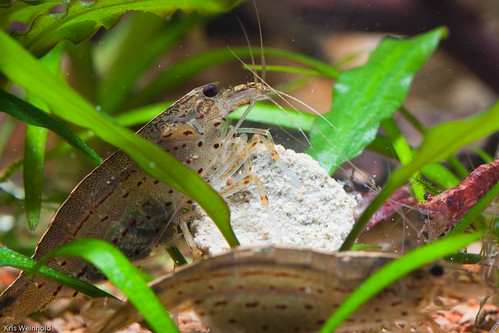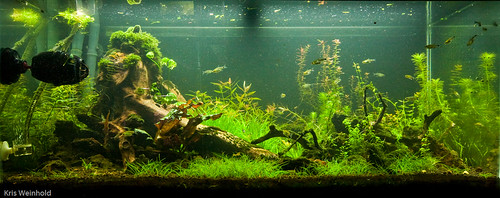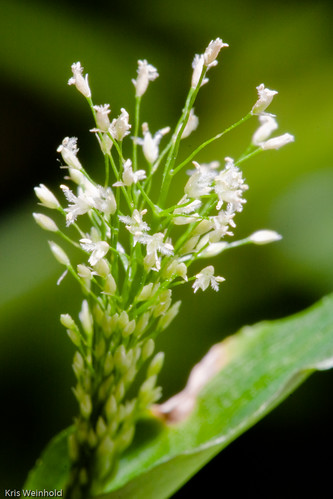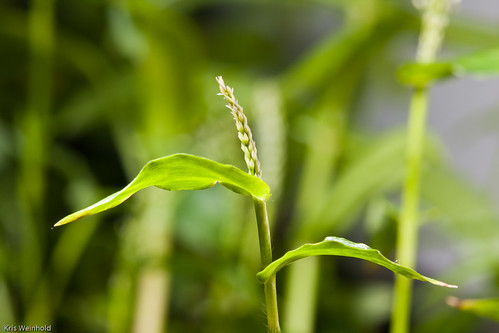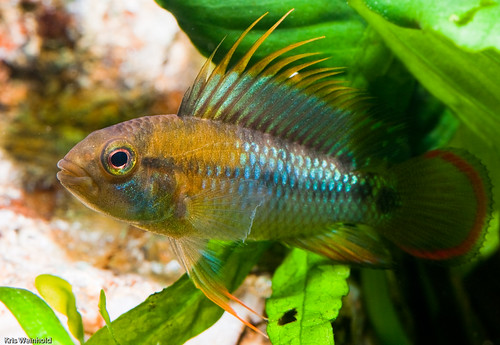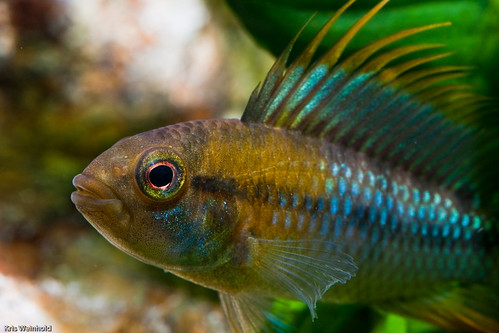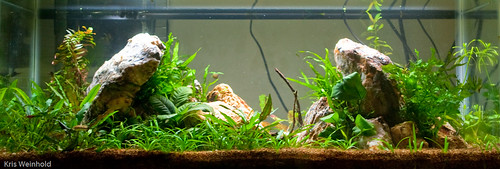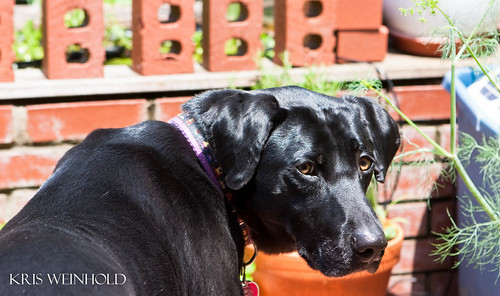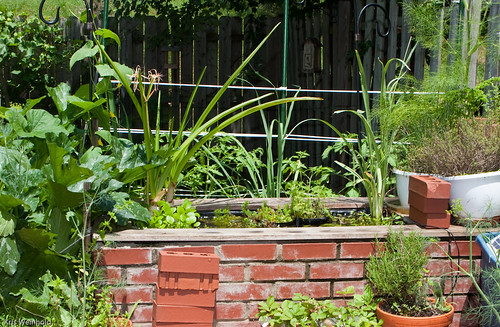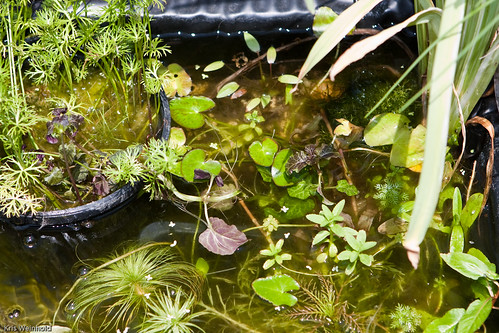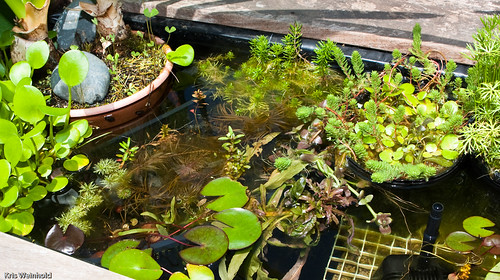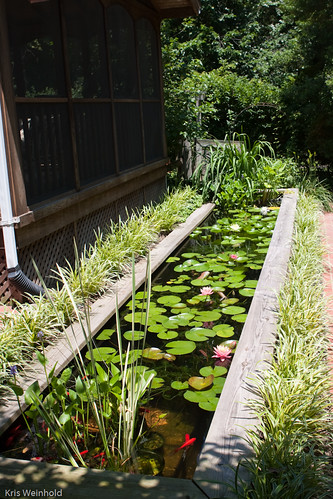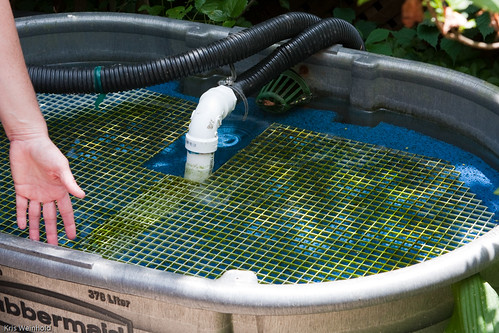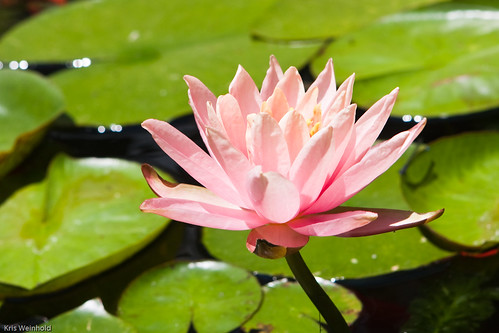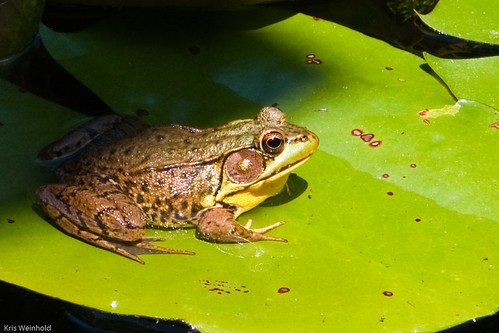Misc Invert Pictures
July 25th, 2009Last weekend, while I was trying to get pictures of the Apistogramma baenschi “Inka” in my 20L, I also snapped a few shots of the Nerite snails and Amano shrimp while waiting for the Apistos to come out of hiding. I wanted to share a few of those shots.
Olive Nerite Snails are by far one of the best algae eaters you can add to your aquarium, but many of them are quite pretty as well. I love the spiraling parallel lines patterned over many of their shells. I thought this guy (above) looks pretty good against the orange tones of the rock.
One of their key attributes is their willingness to slither along the glass, cleaning it of green spot, or other tough algae. You can see that this particular snail’s shell is slowly eroding away due to the lower pH and hardness of my water. This is fairly common in planted aquariums, especially when CO2 is injected as the carbonic acid is hard on their shells. I’ve known some hobbyists who used reef epoxy to fill in these holes, prolonging the life of their invert inhabitants.
Amano shrimp are the other must have invert in nearly every aquarium. They can clear a field of hair algae in a matter of days, if added in proper proportion to the size of the tank. (That, by the way, is probably roughly 1 shrimp/2 gallons.) Too many, with too little algae, and they will start eating your moss fronds, or other delicate leaved plants. To minimize that, I feed mine algae wafers. The largest Amano in the tank usually swims right to the wafer, and holds it captive until he’s eaten his fill. Then the rest of the invertibrates in the tank swarm the leftovers. A day of the life of an invert.
